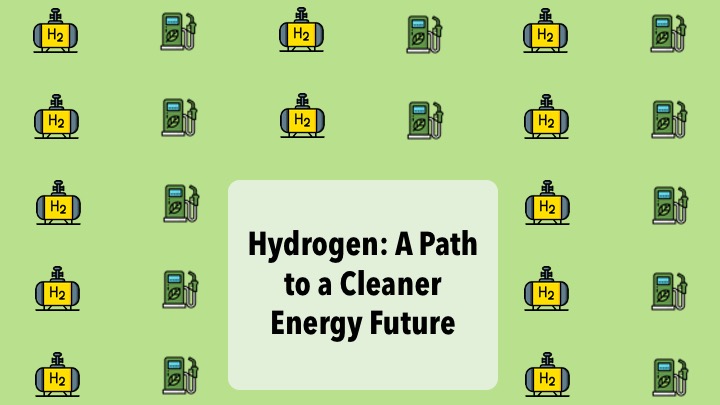
Hydrogen: A Path to a Cleaner Energy Future
The world is heavily reliant on fossil fuels, accounting for 85% of global energy use. With business-as-usual interventions, this trend is projected to lead to a 50% increase in greenhouse gas (GHG) emissions by 2050, causing harm to the environment and is main contributor to climate change. Energy related CO2 emissions accounts for two-thirds of global GHG emissions.

Hydrogen energy is becoming crucial as the world shifts towards cleaner energy. Here’s why:
- It is the simplest and also the most abundant element in the universe(about 75% by mass of the universe is made up of hydrogen and 90% by volume)
- It has highest energy content of any common fuel by weight (about three times more than gasoline, diesel and natural gas), but it has the lowest energy content by volume (about four times less than gasoline)
- It produces clean exhaust and by-product obtained is water, when burned and has great potential for decarbonization(Hydro means water and genes means to produce; so, water producer)
- It, can be produced – separated – from a variety of sources including water, fossil fuels, or biomass, and used as a source of energy or fuel
- It is Versatile in usage, reducing dependence on fossil fuels and imports and can be utilized from the point of production to the point of consumption including various applications like oil refineries, industries, transport, power generation, domestic, etc. which emit significant amounts of CO2. Hydrogen, can be transformed into electricity to power homes and feed industry, and into fuels for cars, trucks, ships and planes. Thus, it can promote the use of diverse domestic and sustainable energy resources
- It can be used as an energy storage and can reduce intermittency risks of renewables

However, pure diatomic hydrogen (H2) is not naturally found. It is almost always linked to other elements. So, while hydrogen as a fuel is extremely clean, its production is not. However, several developments are now in place of older alternative hydrogen production technology where green hydrogen is produced from water via electrolysis. Pure hydrogen is a disreputably difficult gas to handle and distribute. It’s the smallest element in the universe, and prone to leak not only through seals and gaskets, but through steel itself. It is highly flammable and forms explosive mixtures with air over a large range of concentrations. To liquefy hydrogen requires chilling to -253˚C, only 20˚C above absolute zero. Where liquefying hydrogen is not practicable, it must be subjected to very significant compression to enable useful quantities to be stored. These are some challenges that need to be addressed before hydrogen can reach its full potential, such as improving production methods, reducing costs, and developing the necessary infrastructure to support a hydrogen-based energy system.
Henceforth, Today, hydrogen is primarily used as a fuel in industrial processes, but there is growing interest in using hydrogen as a clean source of energy for transportation, heating, and power generation.
And Tomorrow, hydrogen is expected to play a larger role in the energy mix, as the demand for clean energy continues to rise and new technologies make it more practical to produce, store, and use hydrogen on a large scale. Hydrogen has the potential to be a game-changer in the transition to a low-carbon future, as it can be produced using renewable energy sources and does not produce harmful emissions when burned.
Here is how, the future of hydrogen energy looks promising, and it is likely to play a crucial role in achieving a more sustainable energy future.


